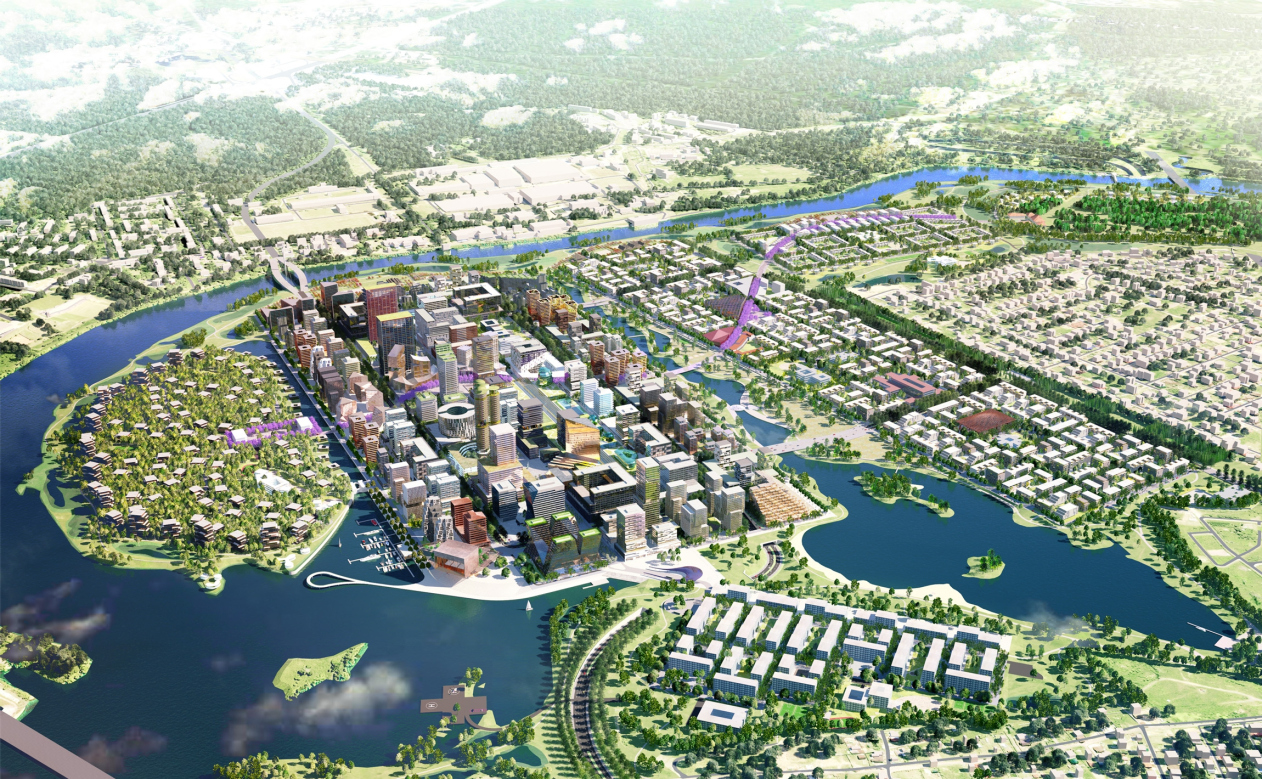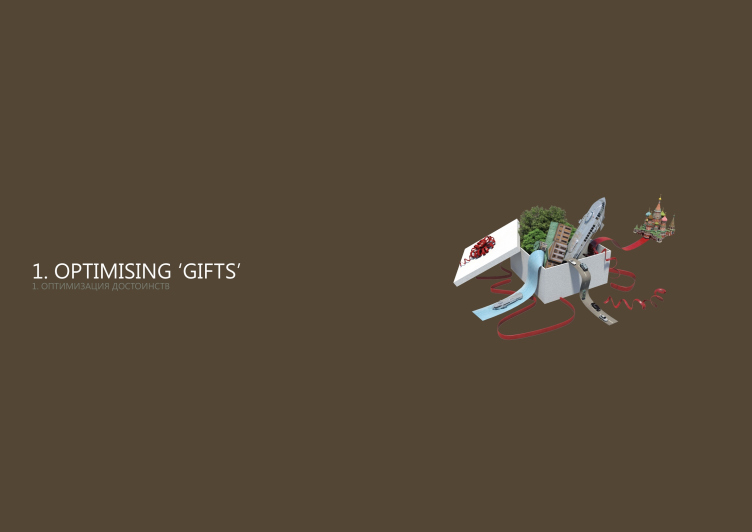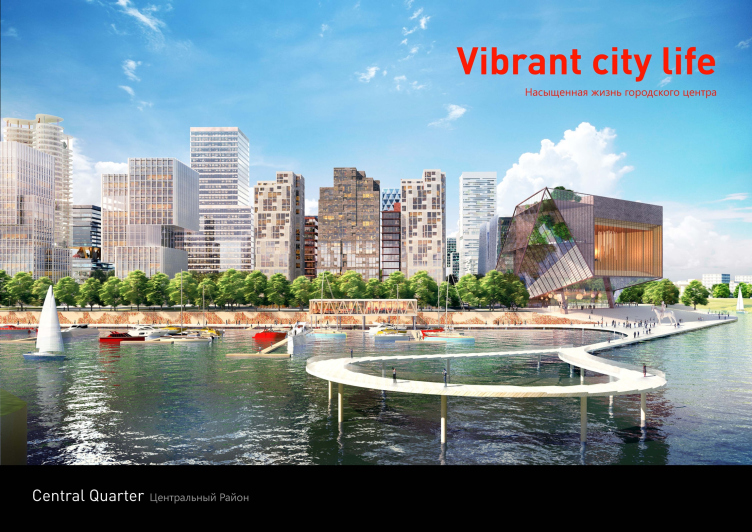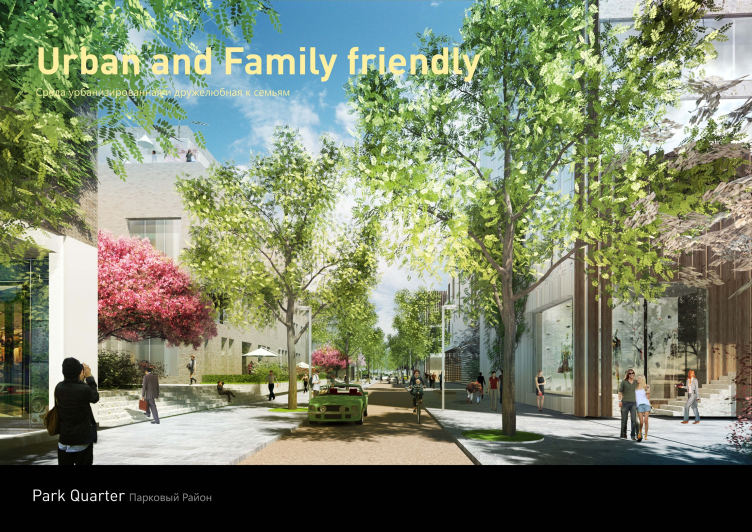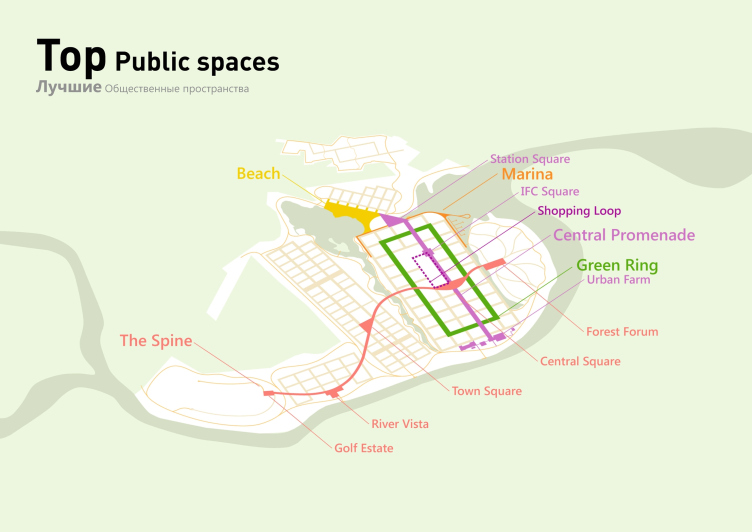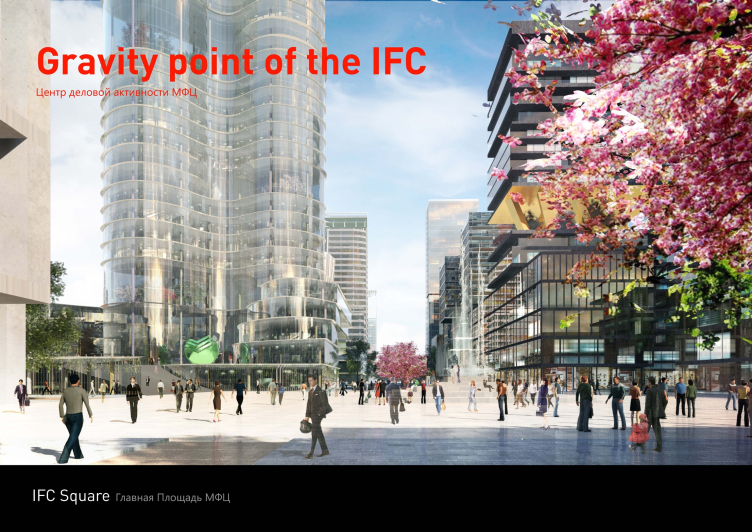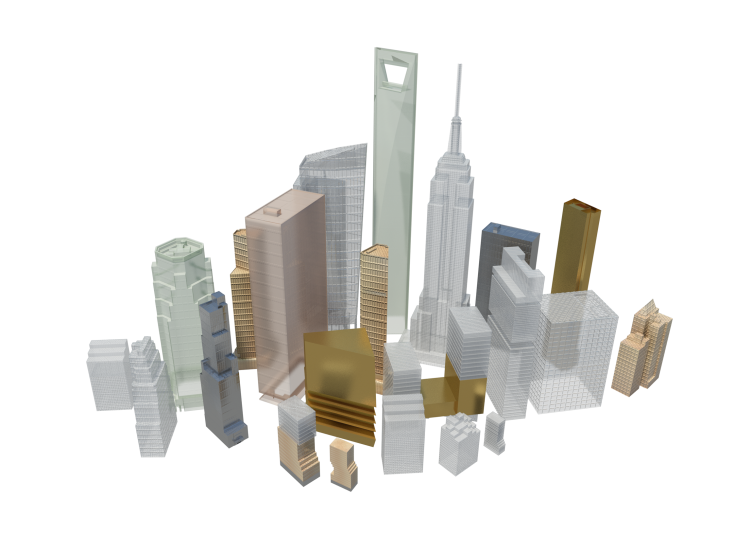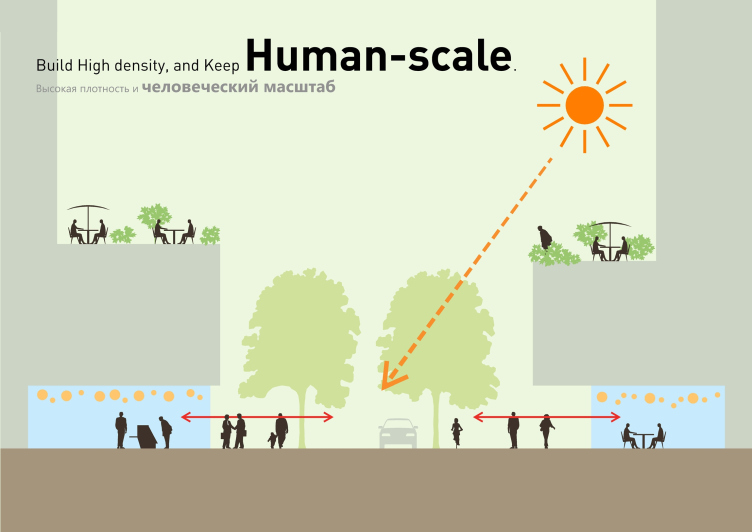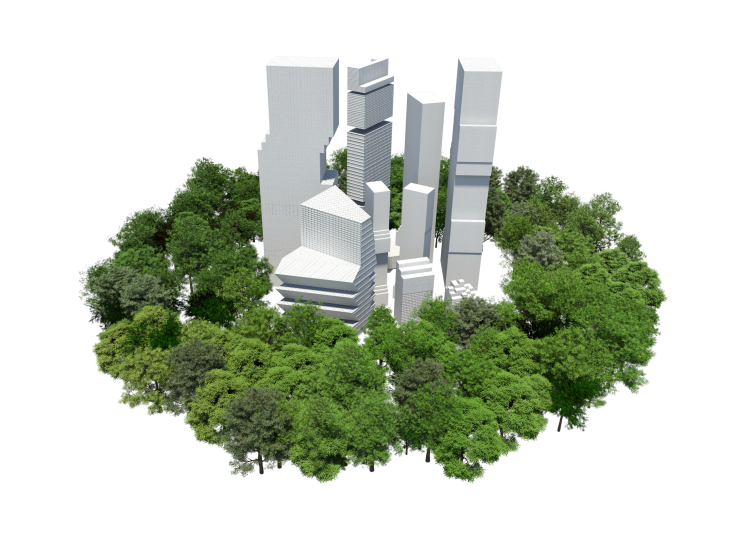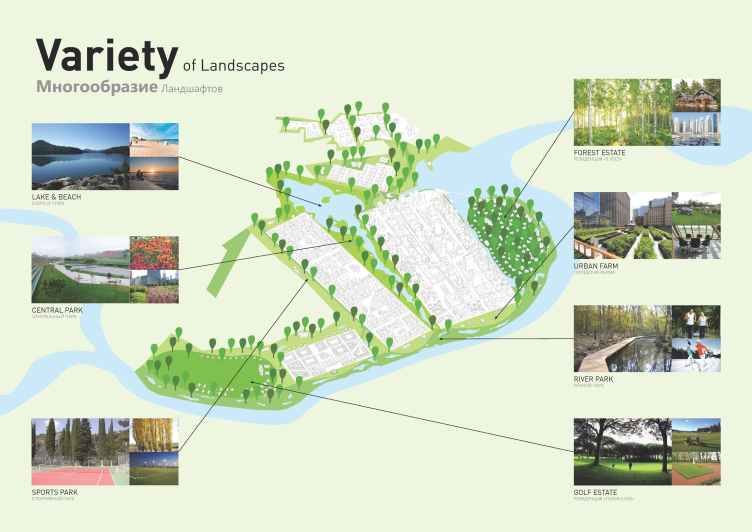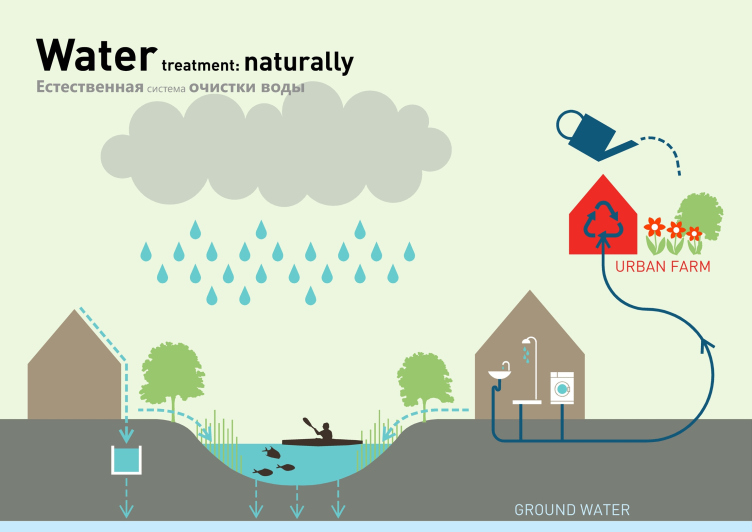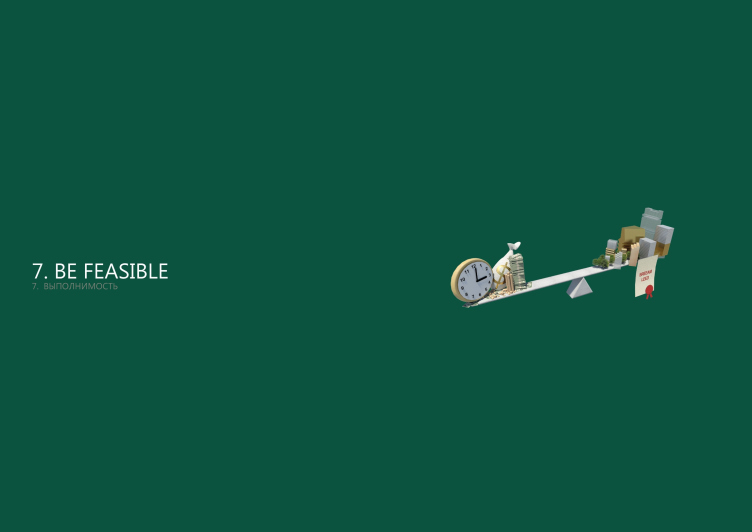
International financial center in Rublevo Arkhangelskoe© «Reserve» + Maxwan
At first we will remind you that the final results of the contest for the best architectural and urban-planning proposal of the International Financial Center have not yet been announced. On the 8th of April, the judging board named the three finalists of the contest, and now the commissioner, ZAO "Rublevo-Arkhangelskoe", will choose the winner that will further work on the project. One of the nominees is the Russian bureau "Reserve" and the Dutch company "Maxwan" that have already done a few projects together - what they offered for Rublevo-Arkhangelskoe is arguably the most detailed project of IFC.
Maxwan and Vladimir Plotkin bureau are doing already the third contest project on end: this cooperation grew particularly strong at the "Zaryadye" Park project, so, when embarking on the development of the IFC project, the architects were already a tight-knit team in which the parties know and understand one another. Probably because of that, the authors pretty soon settled down about the overall layout of the future financial center, as well as about the key principles of the development of the project.
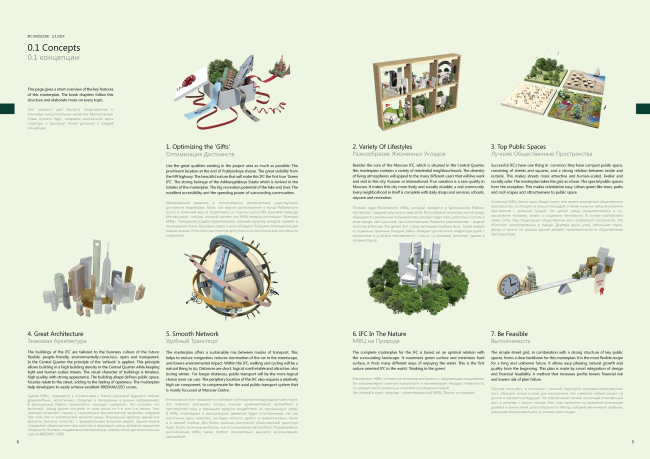
International financial center in Rublevo Arkhangelskoe© «Reserve» + Maxwan
Totally, there were seven "starting points" of this kind - like the cornerstones of the concept they support not only its attractiveness but also its exceptional sustainability. The first and probably the most important starting point was about making the most of the wonderful scenery that the IFC will be built upon.

International financial center in Rublevo Arkhangelskoe© «Reserve» + Maxwan
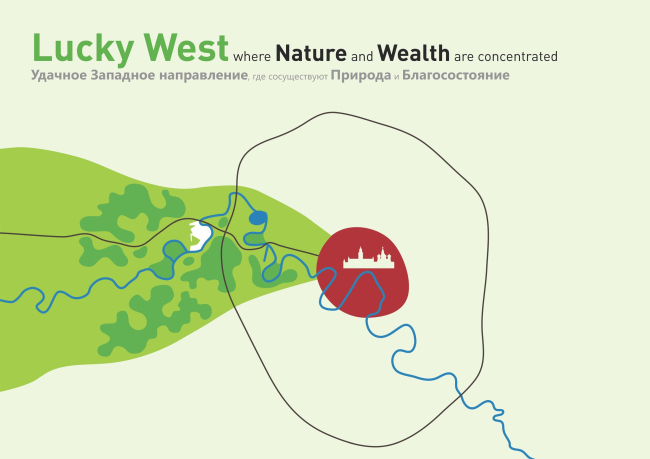
International financial center in Rublevo Arkhangelskoe© «Reserve» + Maxwan
The architects themselves call this idea "Optimizing the Gifts", explaining that the remoteness from the megalopolis together with the breathtaking scenery around the site, and the panoramic view of the Moskva River are the factors that can (and must!) make the IFC the greenest business area ever, totally unlike the traditional financial centers. The main question is, of course, how you use these benefits: if you hand the territory completely over to the bankers, you will hardly be able to create a truly sustainable neighborhood (which is more like a whole city, judging by its scale).
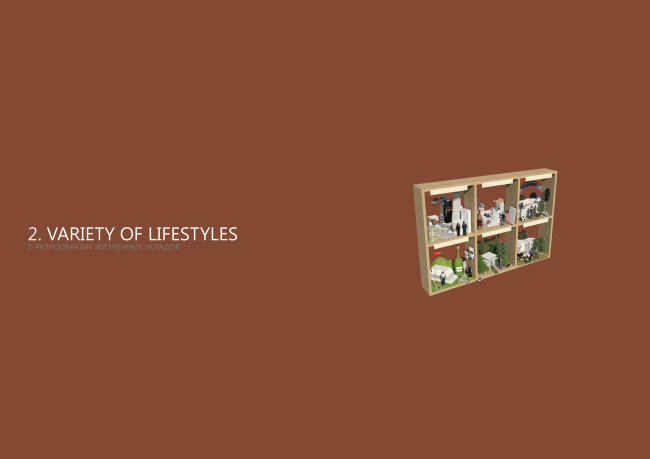
International financial center in Rublevo Arkhangelskoe© «Reserve» + Maxwan
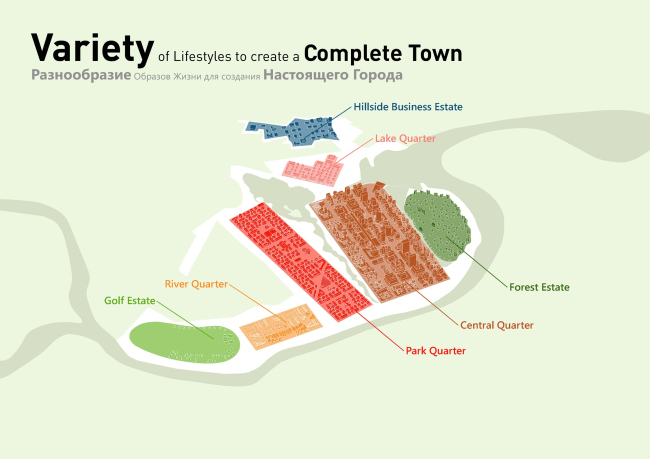
International financial center in Rublevo Arkhangelskoe© «Reserve» + Maxwan
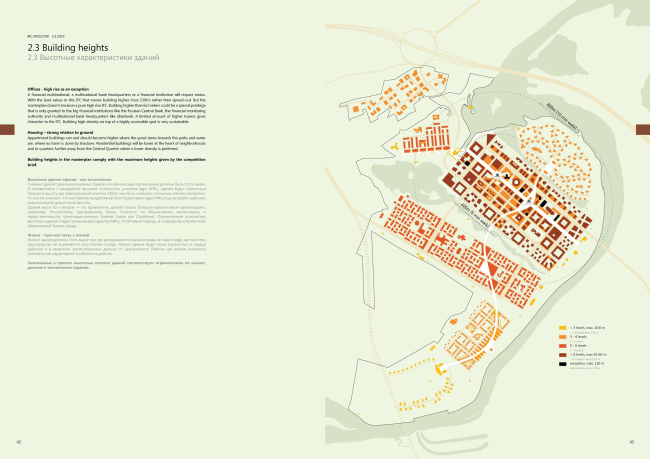
International financial center in Rublevo Arkhangelskoe© «Reserve» + Maxwan
It was specifically because of this that the next points were the "optimum balance with the surrounding landscape" and "variety of lifestyles" or the "semi functional" planning, so popular nowadays. What is interesting is the fact that unlike the many other competitors, the team of "Reserve" and "Maxwan" forewent the idea of spreading the functions evenly all over the territory - instead, the architects create five planning clusters each of which combines these functions in different proportions and thus gets a face of its own in the structure of the city that is in construction. Yet another two clusters will be placed on the triangular plots that are located along the northern border of the site closest to the Novorizhskoe Highway - but this is a further perspective of the development of the project.

International financial center in Rublevo Arkhangelskoe© «Reserve» + Maxwan
The densest area will be the Central that, in fact, is getting the role of the international financial center: the numerous administrative buildings here alternate with the high-rises that also include apartments (at the very top) and the public functions (at the very bottom). On the plan, the neighborhood has the shape of an elongated rectangle, and, from the planning point, the architects play this configuration as if on que: coupled with the numerous traversing boulevards, the four longitudinal axes of the streets form the planning grid - some kind of New York whose business-like air is clearly readable from the first glance.

International financial center in Rublevo Arkhangelskoe© «Reserve» + Maxwan
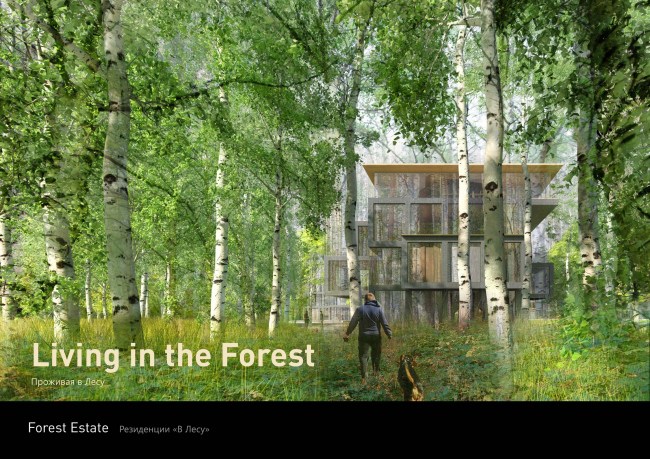
International financial center in Rublevo Arkhangelskoe© «Reserve» + Maxwan
Nearby, the Park quarter (Forest Estate) stretches, just as triangular on the plan and having the same grid of blocks - only now residential ones. And, while the Central area had only some green injections of the boulevard esplanades and odd fractions of a small park here and there, here the verdure dominates: the broad park belt embraces the neighborhood along its perimeter, and each of the blocks is adjoined by a green boulevard. The planning density is also different here: there are mostly five-story houses that create the atmosphere of a nice little town.
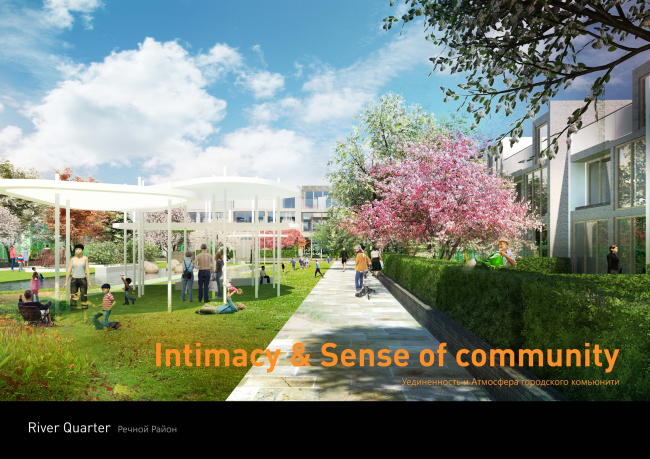
International financial center in Rublevo Arkhangelskoe© «Reserve» + Maxwan
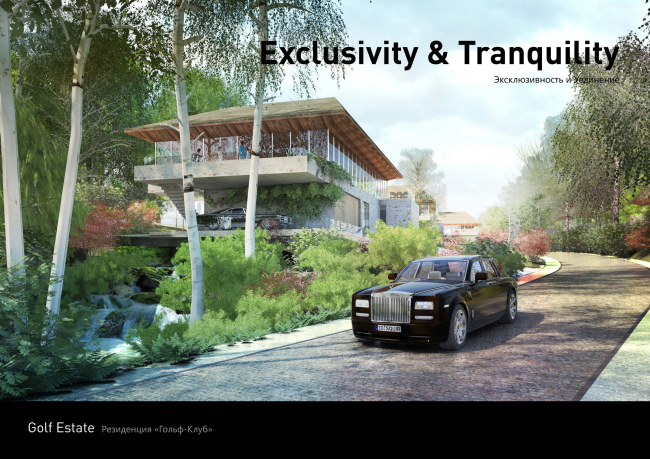
International financial center in Rublevo Arkhangelskoe© «Reserve» + Maxwan
Yet another rectangle is placed not perpendicular to the river but parallel to it: this is the River quarter that consists predominantly of townhouses that mark the transition from the dense urban environment to the more sparse country housing. This makes perfect sense because behind it, the river meadows start, that are prohibited to build upon: the architects place here a golf-club surrounded by private residences that nicely fit into the surrounding scenery. A similar "green island" is also flanking the yard from the other side: the woodland that prevails there also cannot fit into the rigid planning grid and thus the architects fit in the residential houses in between the trees, giving to the mater plan of the Forest neighborhood a picturesque naturalness.
The groundbreaking planning breakthrough of "Reserve" and "Maxwan" is the decision of digging two water channels on the territory of the IFC: the architects run one of them from the Zakharkovsky Reservoir that is located in the northwest part of the territory, and the other - from the horseshoe-shaped riverbed of the abandoned loop of the Moskva River, located more to the east. The "blue streets", on the one side, give to the structure of the city a clear and bright identity, and, on the other side, help to zone out the so-unlike Central, Park, and Forest neighborhoods. The environment is also livened up by the numerous bridges thrown from one neighborhood to another, the main connecting axis being the broad winding "snake" thoroughfare upon which the architects string the main public territories of each of the clusters.
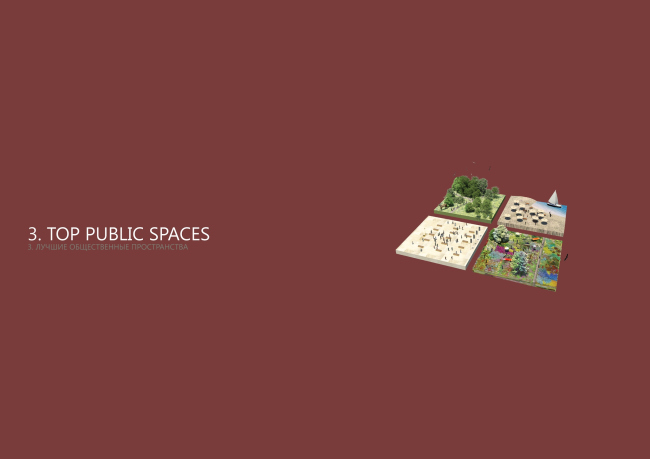
International financial center in Rublevo Arkhangelskoe© «Reserve» + Maxwan

International financial center in Rublevo Arkhangelskoe© «Reserve» + Maxwan
Top public spaces are yet another cornerstone of this project. Instead of creating a large number of "recreation" places, the architects laid their stress on the landscaped streets and squares together with their thought-out connections with the outside environment. What is interesting is the fact that the Central neighborhood with its numerous high-rises uses the "height-reduction concept": the high-rise facade steps back from the edge of the street at the level of the 4th or 5th floor, thus letting even such dense housing as this one keep the light and the human proportion of the street. The "maximum humanity" is also achieved at the expense of detailed elaboration of the transport issue (yet another priority).
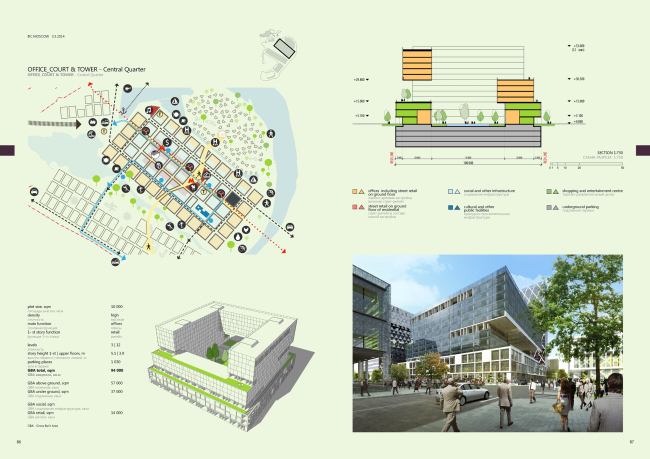
International financial center in Rublevo Arkhangelskoe© «Reserve» + Maxwan
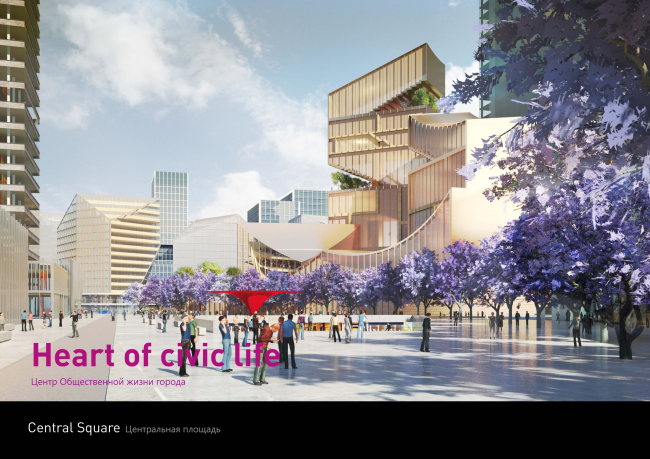
International financial center in Rublevo Arkhangelskoe© «Reserve» + Maxwan

International financial center in Rublevo Arkhangelskoe© «Reserve» + Maxwan
"The master plan that we developed provides for steady interrelation between various types of transport - Vladimir Plotkin explains - We tried to arrange it in such a way that the priority here is given to the pedestrians and cyclists, while the highly-developed public transportation (metro, busses, river taxis) will allow for making this town a pretty much car-free zone". The architects even found a solution for eliminating the possibility of cars passing through the territory of the IFC (located between the Rublevskoye and Novorizhskoe highways, it will indeed become a temptation for the drivers that like a shortcut, especially during the commuter traffic jams on Moscow Ring Road): this risk is eliminated by the thought-out hierarchy of the streets, regulated crossroads, and a tollway system.
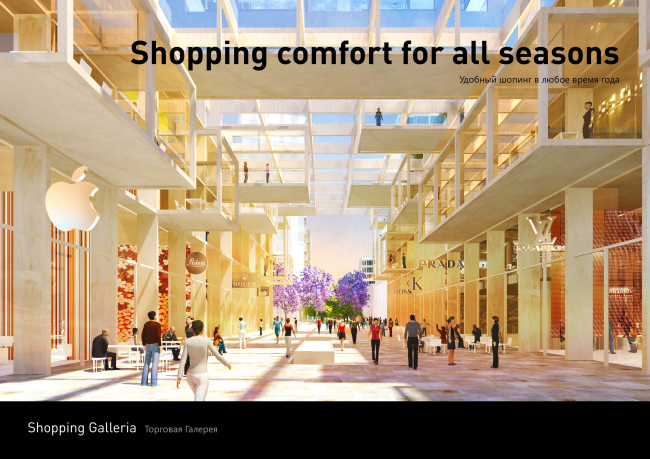
International financial center in Rublevo Arkhangelskoe© «Reserve» + Maxwan
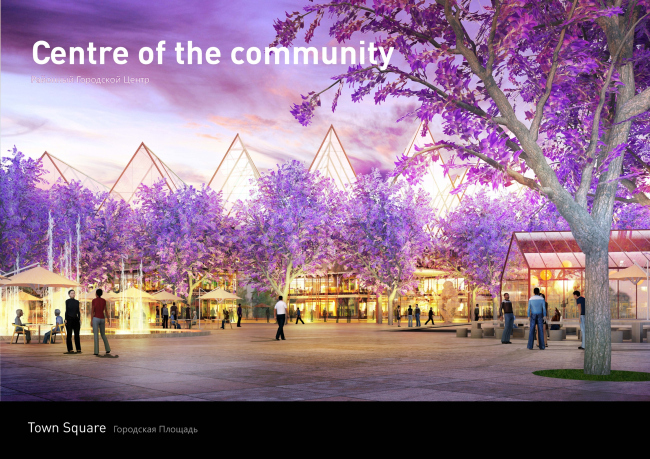
International financial center in Rublevo Arkhangelskoe© «Reserve» + Maxwan
Great architecture was also an unconditional priority of this project (IFC will consist of friendly, sustainable, and "open" buildings, many of which are so expressive that stick in one's memory from the first visualization), but its sustainability is, first of all, is provided for by its very master plan. Each block here is terminally flexible and consists of three elements: the parking (it can occupy the construction blueprint fully or partially), the "base" (the first floors of the buildings, sometimes joined into a single whole), and the "upper volumes" (these can be altered or even replaced altogether with time, leaving only the outside front facades unchanged). Just as flexible and at the same time unconventional is the plan of the "layer" development of the blocks. Instead of developing such a huge territory in the traditional phases, "Maxwan" and "Reserve" proposed to landscape all the five major clusters, and then start gradually building in them - in small increments, but all the five simultaneously. According to the architects, such a "recipe" of developing this land long-term for the future unknown will provide for the natural and gradual growth of the town and, more importantly, ensure the high quality of the environment from the very start.
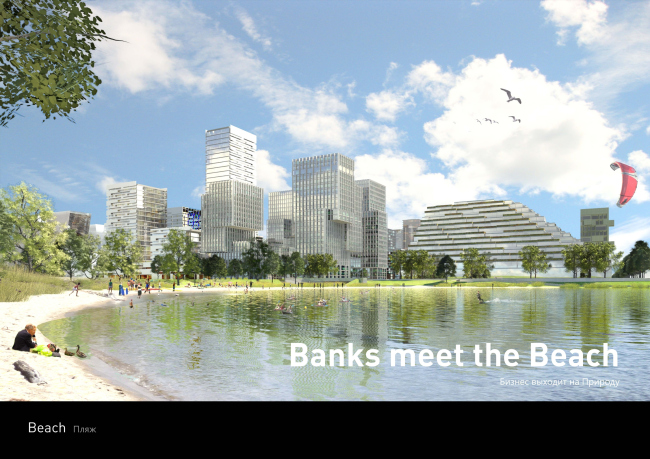
International financial center in Rublevo Arkhangelskoe© «Reserve» + Maxwan

International financial center in Rublevo Arkhangelskoe© «Reserve» + Maxwan
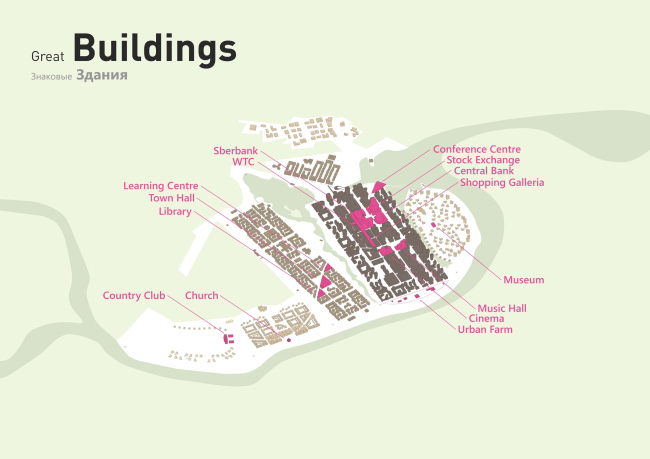
International financial center in Rublevo Arkhangelskoe© «Reserve» + Maxwan

International financial center in Rublevo Arkhangelskoe© «Reserve» + Maxwan
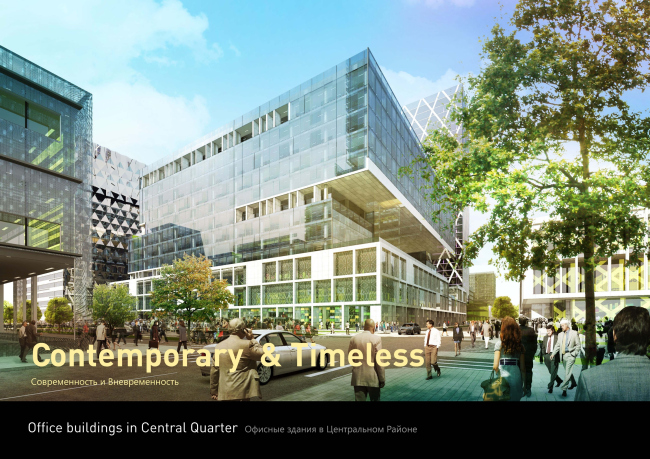
International financial center in Rublevo Arkhangelskoe© «Reserve» + Maxwan
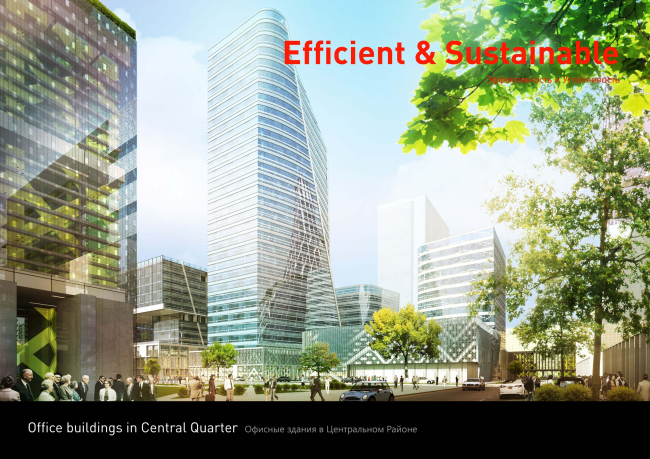
International financial center in Rublevo Arkhangelskoe© «Reserve» + Maxwan
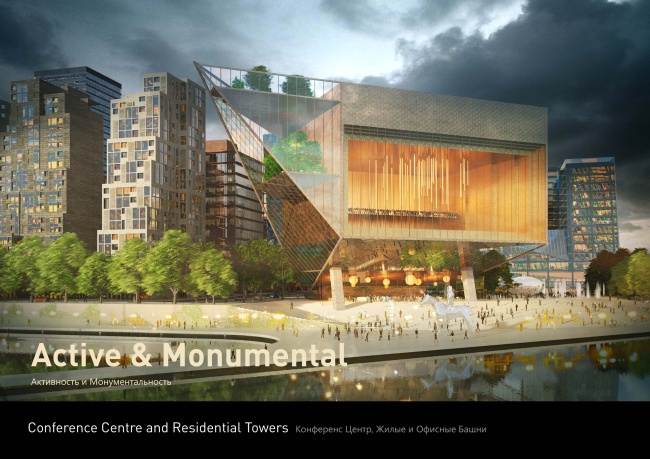
International financial center in Rublevo Arkhangelskoe© «Reserve» + Maxwan
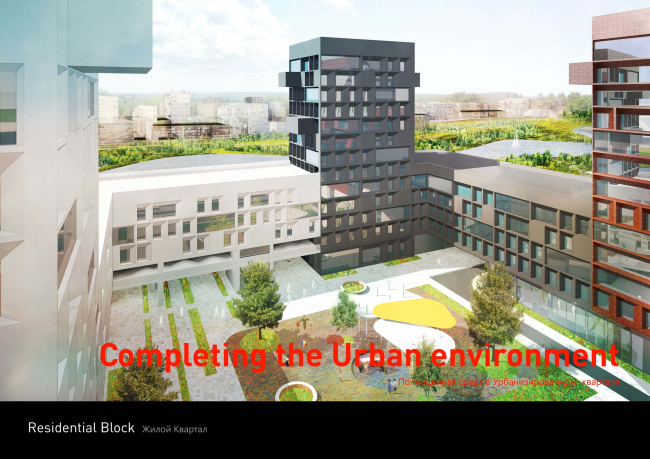
International financial center in Rublevo Arkhangelskoe© «Reserve» + Maxwan
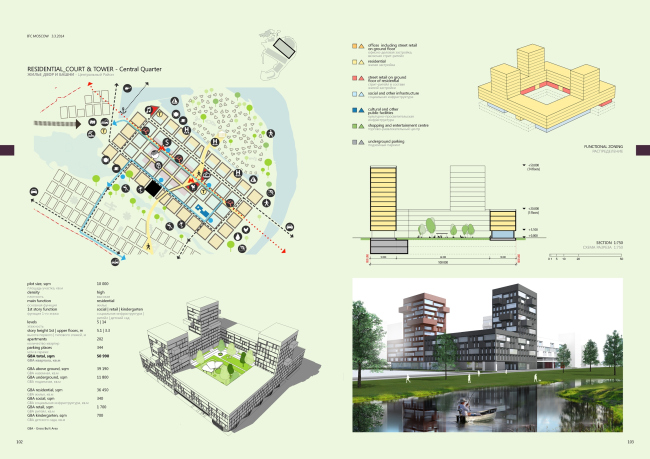
International financial center in Rublevo Arkhangelskoe© «Reserve» + Maxwan
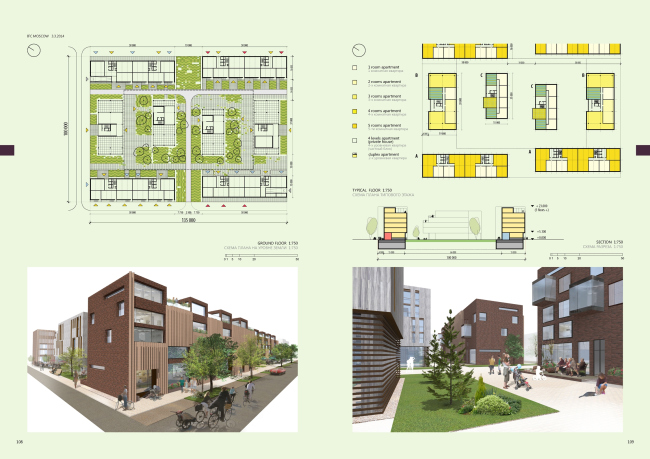
International financial center in Rublevo Arkhangelskoe© «Reserve» + Maxwan

International financial center in Rublevo Arkhangelskoe© «Reserve» + Maxwan
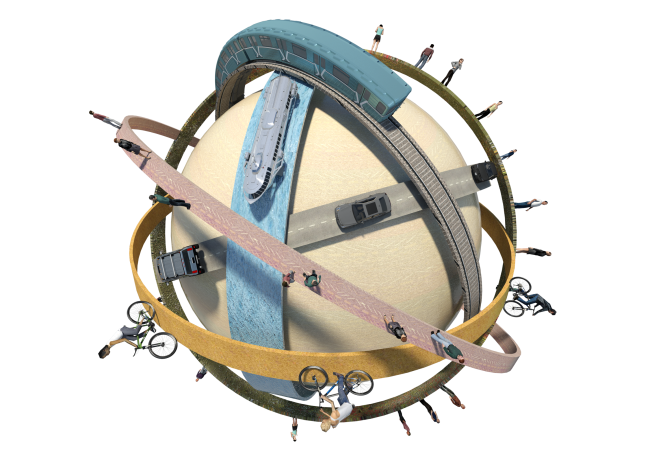
International financial center in Rublevo Arkhangelskoe© «Reserve» + Maxwan
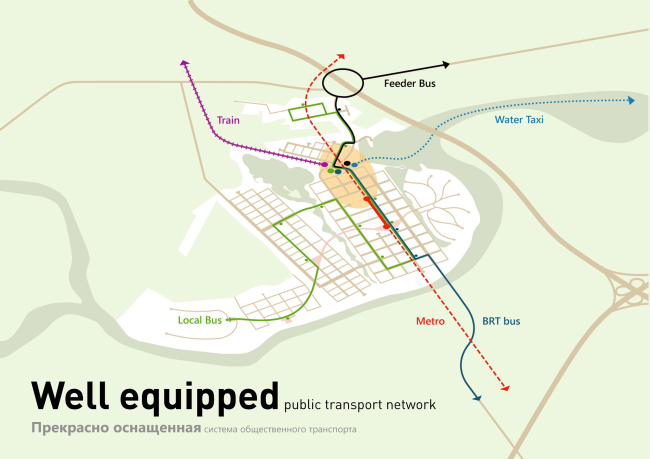
International financial center in Rublevo Arkhangelskoe© «Reserve» + Maxwan
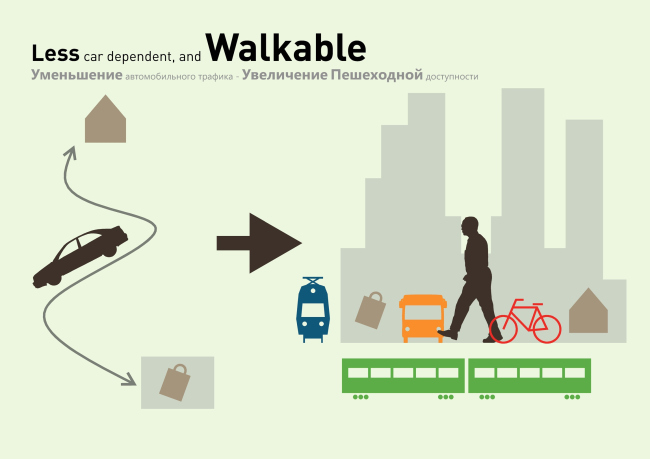
International financial center in Rublevo Arkhangelskoe© «Reserve» + Maxwan

International financial center in Rublevo Arkhangelskoe© «Reserve» + Maxwan

International financial center in Rublevo Arkhangelskoe© «Reserve» + Maxwan
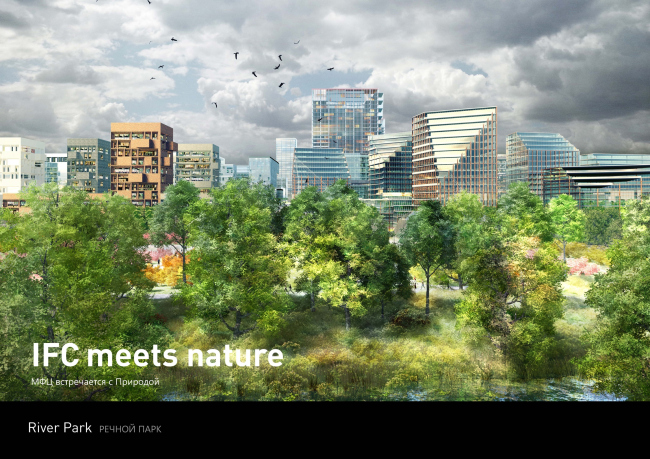
International financial center in Rublevo Arkhangelskoe© «Reserve» + Maxwan
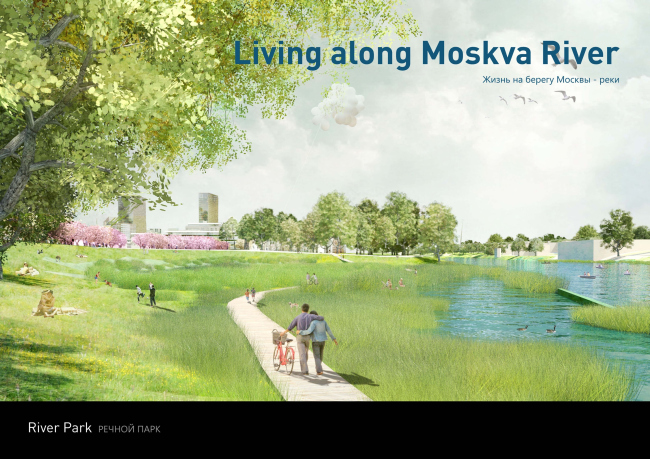
International financial center in Rublevo Arkhangelskoe© «Reserve» + Maxwan
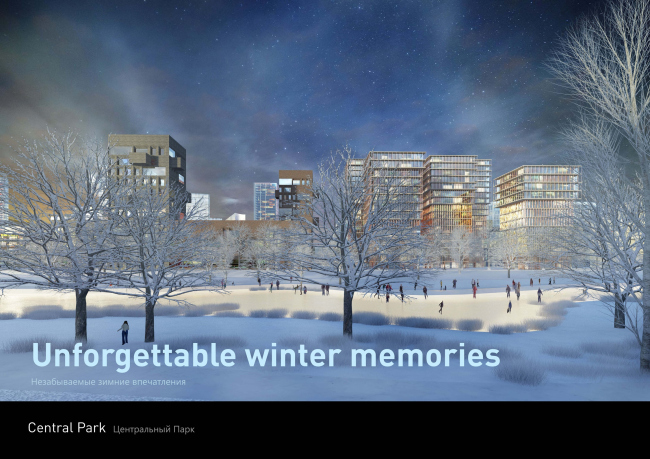
International financial center in Rublevo Arkhangelskoe© «Reserve» + Maxwan

International financial center in Rublevo Arkhangelskoe© «Reserve» + Maxwan

International financial center in Rublevo Arkhangelskoe© «Reserve» + Maxwan
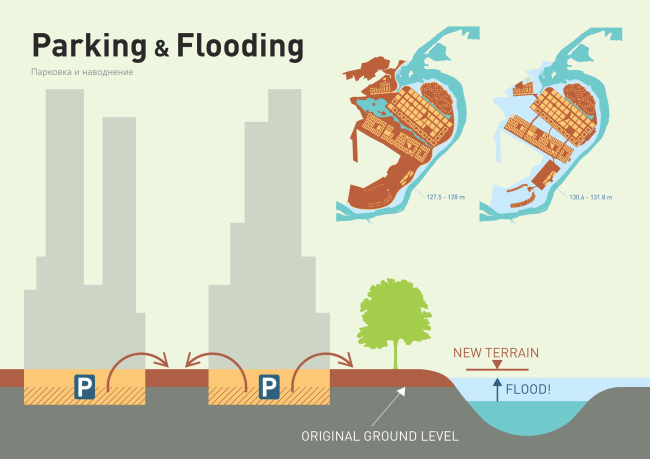
International financial center in Rublevo Arkhangelskoe© «Reserve» + Maxwan
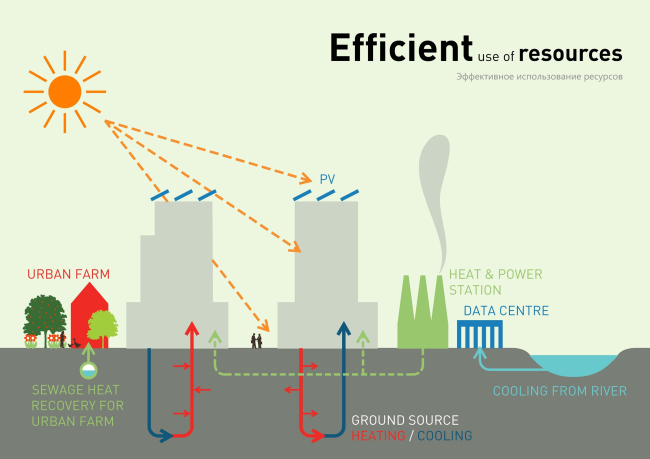
International financial center in Rublevo Arkhangelskoe© «Reserve» + Maxwan
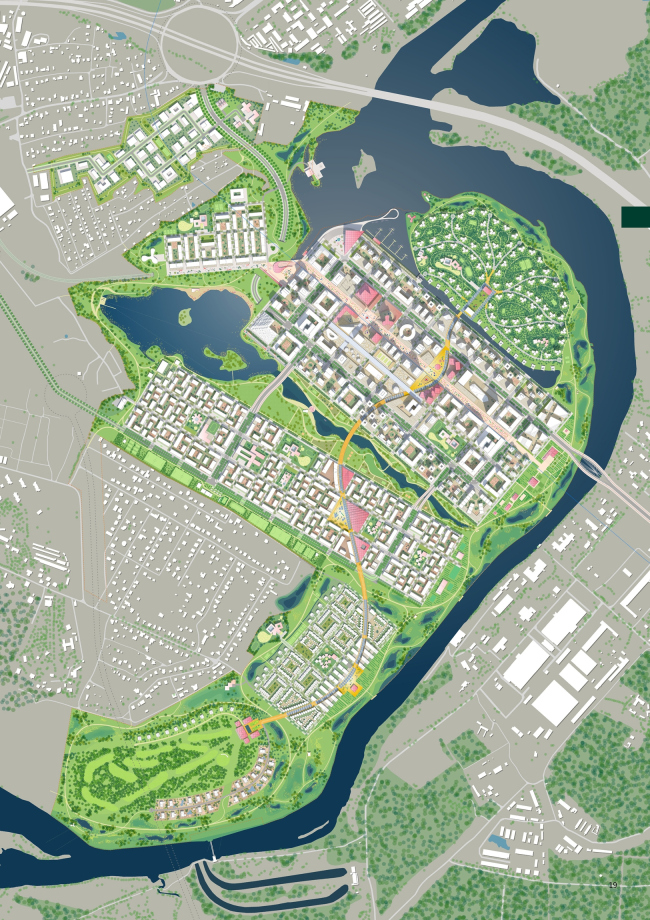
International financial center in Rublevo Arkhangelskoe© «Reserve» + Maxwan
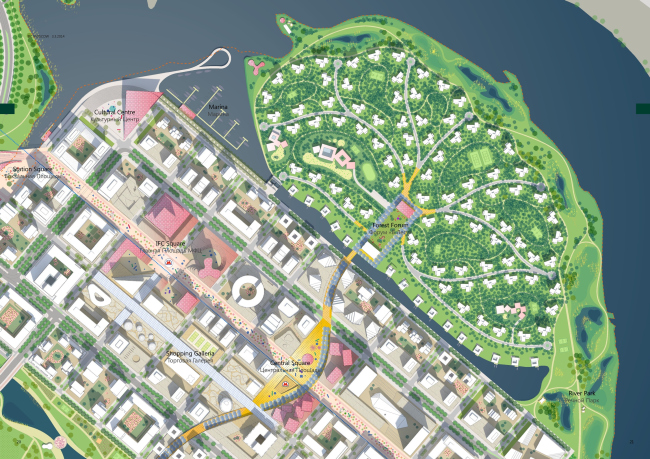
International financial center in Rublevo Arkhangelskoe© «Reserve» + Maxwan
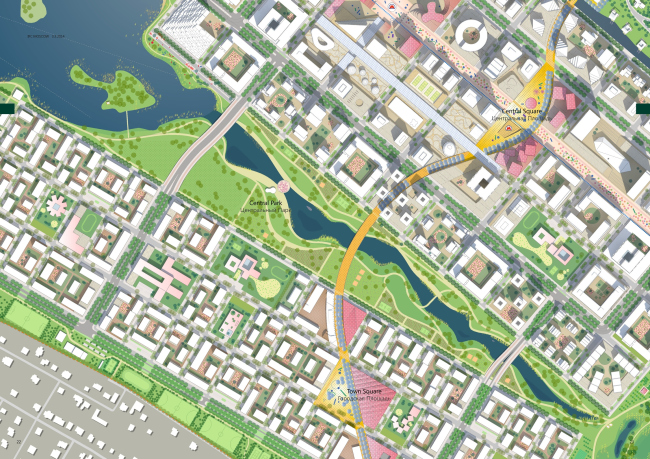
International financial center in Rublevo Arkhangelskoe© «Reserve» + Maxwan
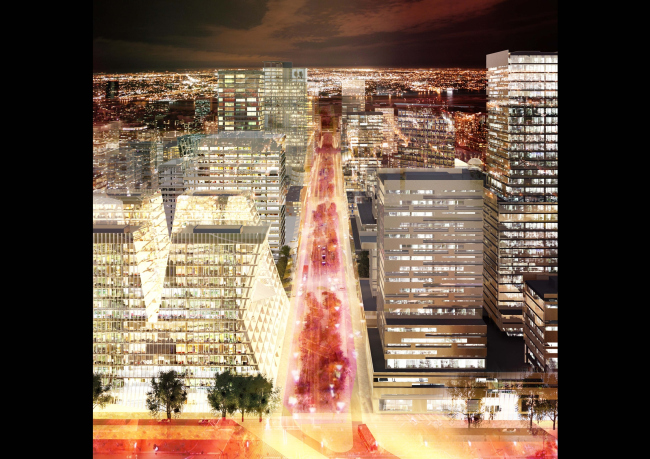
International financial center in Rublevo Arkhangelskoe© «Reserve» + Maxwan
The international financial center in Rublevo-Arkhangelskoe
Copyright: © TPO Reserve + Maxwan

